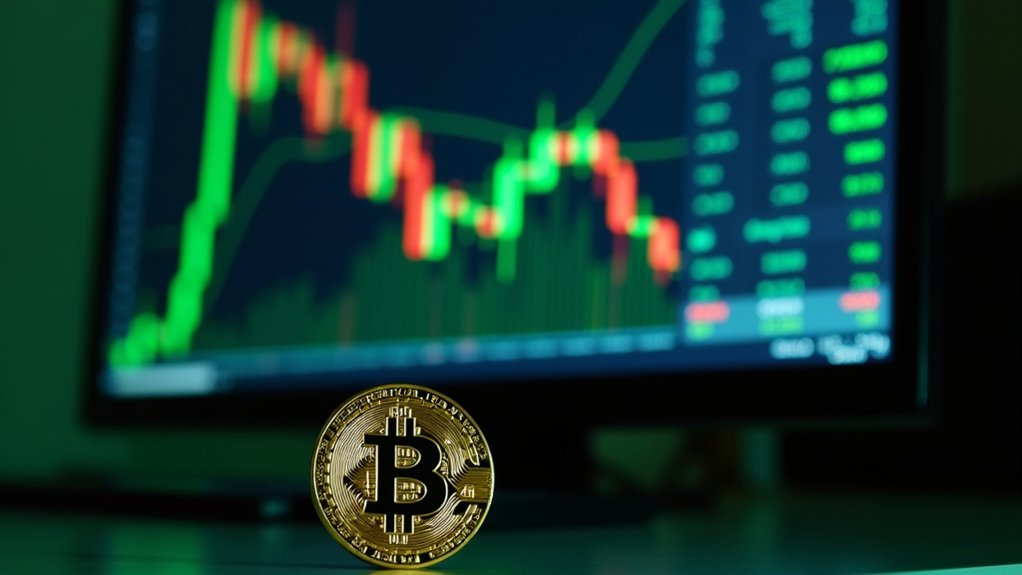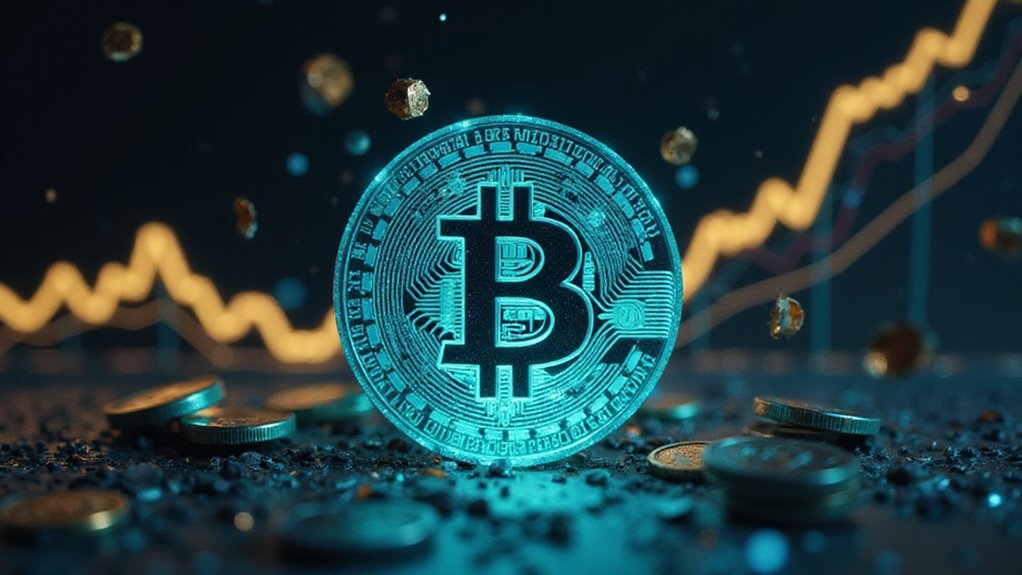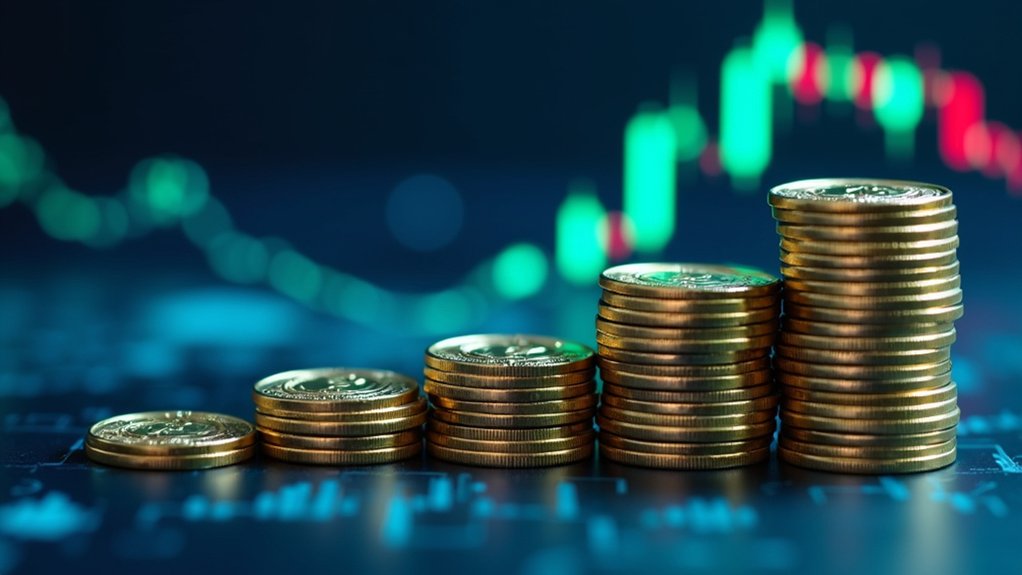Token buybacks in cryptocurrency projects show promising results for value preservation. Data reveals that tokens with buyback mechanisms outperformed those without by 46.67% year-to-date, demonstrating their effectiveness during market downturns. These strategies, borrowed from traditional finance, reduce circulating supply through purchase and burning of tokens. However, investors must distinguish between genuine value creation and potential market manipulation. Implementation transparency and project fundamentals remain vital factors when evaluating the long-term benefits of crypto buyback programs.

As cryptocurrency markets continue to mature, projects are increasingly adopting traditional financial strategies to manage token economics and create value for holders. Token buybacks represent one such mechanism borrowed from traditional equity markets, where crypto projects repurchase their own tokens from circulation, creating scarcity and potentially driving up prices. This process, which can be executed manually or through automated smart contracts, aims to reduce the circulating supply while signaling confidence to investors.
The mechanics are straightforward but powerful. Projects allocate resources to purchase their tokens from exchanges, then either hold them as reserves or permanently remove them through burning. This reduction in supply, when demand remains constant or increases, can create upward price pressure. Major players have accepted this approach with notable examples including Binance, which dedicates 20% of profits to quarterly BNB buybacks, and Ripple, which executed a substantial $285 million buyback operation. These buybacks are typically announced in advance to inform token holders and the broader community.
Market data suggests these strategies may be effective. Projects implementing buyback programs showed significantly better performance, with only a -0.48% year-to-date price return compared to -47.15% for those without such mechanisms. This stark 46.67% differential indicates buybacks may provide meaningful value preservation during market downturns. The supply scarcity created through buyback programs aligns with fundamental cryptocurrency valuation principles that drive inherent value.
Buyback-enabled crypto projects outperformed non-buyback tokens by over 46% during market downturns, demonstrating significant value preservation potential.
Implementation strategies vary widely across the ecosystem. Some projects opt for regular, scheduled burns at predetermined intervals, while others execute one-time large-scale reductions. Protocol-driven burns, integrated directly into blockchain mechanics, represent a more sophisticated approach, as seen with Ethereum’s burning of 1.3 million ETH through its protocol mechanism. Post-buyback announcements typically generate higher idiosyncratic volatility and enhanced price stability over time.
Despite potential benefits, buybacks carry significant risks. Critics point to concerns about market manipulation, artificial price inflation, and reduced liquidity that could impair normal trading functions. Regulatory uncertainties add another layer of complexity, as buybacks may face scrutiny in jurisdictions with evolving cryptocurrency regulations.
For investors evaluating projects with buyback mechanisms, understanding the specific implementation details is essential. The long-term sustainability of a project should take precedence over short-term price movements potentially influenced by supply reduction tactics. While TRON’s burning of 1 billion TRX tokens reduced its supply by 50%, such dramatic actions don’t guarantee lasting value.
Token buybacks represent a sophisticated financial tool that, when implemented transparently and strategically, can provide genuine benefits to blockchain ecosystems. However, they require careful analysis to distinguish between substantive value creation and temporary market manipulation.
Frequently Asked Questions
How Do Token Buybacks Differ From Stock Buybacks?
Picture two financial ecosystems with different foundations.
Token buybacks differ from stock buybacks in five critical ways:
tokens lack direct equity ownership in projects;
crypto markets experience higher volatility than traditional stocks;
tokens often serve utilities beyond investment value;
buybacks interact with token emission schedules that control inflation;
and crypto projects typically operate without consistent revenue streams that traditional companies use to fund repurchases.
These fundamental differences shape their respective market impacts and regulatory treatments.
What Risks Do Investors Face With Crypto Buyback Programs?
Investors in crypto buyback programs face significant risks across multiple dimensions.
Market manipulation threatens through artificial price inflation and potential pump-and-dump schemes by large token holders.
Regulatory uncertainties exist as authorities increase scrutiny without clear frameworks across jurisdictions.
Financial stability concerns include reduced liquidity and masked project weaknesses.
Additionally, technological vulnerabilities expose investors to smart contract exploits, front-running by insiders, and security breaches that could compromise repurchased tokens.
These risks require careful evaluation before investment decisions.
Can Buybacks Manipulate Token Price Artificially?
Cryptocurrency buybacks can artificially manipulate token prices through manufactured demand.
When projects purchase their own tokens, they reduce circulating supply while increasing market demand, potentially inflating valuations beyond fundamental worth.
Strategic timing of these programs often coincides with downtrends to reverse negative price momentum.
Research indicates projects with buyback mechanisms outperformed others by 46.67% in 2024, demonstrating their price impact.
Without transparency, these programs risk creating misleading price signals that fail to reflect genuine market sentiment or project health.
Are Token Buybacks Regulated by Financial Authorities?
Token buybacks face increasing regulatory scrutiny worldwide. Financial authorities like the SEC and MAS have begun classifying tokens with buyback programs as potential securities or debentures, triggering compliance requirements.
Regulatory approaches vary significantly by jurisdiction—from the comprehensive MiCA framework in the EU to more fragmented oversight elsewhere. Projects conducting buybacks must navigate disclosure requirements, anti-manipulation protocols, and potential cross-border complications.
The regulatory landscape continues evolving, with standardized reporting frameworks expected to emerge in coming years.
How Transparent Are Protocols About Buyback Execution and Metrics?
Transparency in crypto protocol buybacks varies significantly across the ecosystem. Leading projects provide detailed metrics on tokens repurchased, funding sources, and execution timelines. However, many protocols offer minimal disclosure beyond initial announcements.
On-chain data provides verification opportunities, though inconsistent reporting standards complicate analysis. As one industry analyst noted, “The quality of buyback reporting correlates strongly with overall project governance maturity.”
Third-party verification remains limited, creating opportunities for misleading claims about program effectiveness.
References
- https://cryptounity.org/news/crypto-dictionary-what-is-a-buyback/
- https://blockapps.net/blog/tokenomics-in-crypto-analyzing-the-impact-of-buybacks-on-token-value-and-market-dynamics/
- https://www.binance.com/en/square/post/177959
- https://www.fdic.gov/system/files/2024-06/2020-request-for-info-standard-setting-3064-za18-c-031.pdf
- https://www.krayondigital.com/blog/buyback-and-burn-mechanisms-in-crypto-pros-cons-impact
- https://www.hbs.edu/socialenterprise/wp-content/uploads/files/Summer_Fellows_history.xlsx
- https://tokenomics-learning.com/en/buyback-and-burn-2/
- https://blockapps.net/blog/tokenomics-in-crypto-exploring-the-risks-of-token-buybacks/
- https://www.placeholder.vc/blog/2020/9/17/stop-burning-tokens-buyback-and-make-instead
- https://presidencyuniversity.in/uploads/images/67b2f3fbd1eb81739781115.pdf




